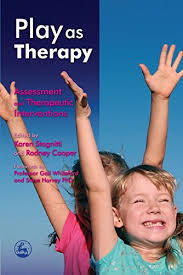Screening Tools and Therapeutic Interventions
You have been asked by your agency to write a report on screening and treating potential clients for addictions.
•Research screening tools and therapeutic interventions that are relevant to clients with particular characteristics such as gender, age, disabilities, culture, and physical handicaps.
•Present a perspective of your choosing. ?Explain how you believe these types of clients will benefit from the interventions you chose along with any potential drawbacks you may need to overcome.
•Conclude with how you will engage these clients in treatment from screening to the first therapeutic intervention.

Answer:
Screening Tools and Therapeutic Interventions
Screening Tools and Therapeutic Interventions. Health promotion activities like health education increase awareness about the importance of a healthy lifestyle. Early screening and treatment help control addictions. Therefore, health promotion should be done using standardized tools to make the correct diagnosis and provide treatment (Garnick, Lee, Horgan, Acevedo, & Washington Circle Public Sector Workgroup, 2013). The screening tools include:
National Institute on Drug Abuse (NIDA), drug-screening tool, is used to screen adults. The tool guides a nurse to pinpoint patients at risk of substance abuse. This tool is essential in the early diagnosis of drug abuse and slows down the progression to dependence. Depending on assessment findings, outcomes can be low, moderate or high risk. The interventions range from reinforcing abstinence and offering support to referring clients for drug treatment (Garnick et al., 2013).
Screening Tools and Therapeutic Interventions
Screening to brief intervention (SBI) too relies on asking questions on how many adolescents abuse substances and categorizes the different risks (Nelson, LaPlante, Peller, LaBrie, Caro, & Shaffer, 2017).
Family therapy is one of the most important therapeutic interventions. Individuals are part of families and the community that affect their ability to cope. The nurse modifies the family and community to improve rates of success for client recovery. The nurse is interested in recognizing all the influences in place that lead to substance use. The influences include family influence, individual influence, peer influence, community influence, and educational influence. The manner in which a family member associates with the other family members may increase or reduce the problem (Nelson et al., 2017).
Family therapy aims at examining encouraging factors for drug abuse. The nurse assesses various components of the family that favor drug abuse. These factors include how the family is lead, utilization of power within the family, role assignment and communication channels. During family therapy sessions, the nurse helps the family to identify patient’s weaknesses and develop techniques to improve the symptoms (Clark, Samnaliev, & McGovern, 2017).
Also, behavioral therapy is essential in the treatment of substance abuse. Behavioral therapy focuses on obtaining goals that are directly related to the client. Behavior therapy examines undesirable behavior while identifying actions that support the presence of undesirable behavior. Different approaches are used to address the behavior. The goal of these interventions is to identify a potential problem and help the client to come up with a feasible plan for solving the problem (Shulman, Fishman, Gastfriend, & Miller, 2013).
Strategic or interactional therapy helps the client to identify their strengths in dealing with drug abuse. The positive nurse-patient relationship is essential for the success of strategic or interactional therapy. The nurse modifies the environment around the client positively to encourage the recovery process (Clark, Samnaliev, & McGovern, 2017).
In conclusion, engaging the client during the process of assessment and treatment promotes treatment success. Different criteria used to ensure that the client receives continuous care. Allowing the client to make important decisions in every step help in treatment success is beneficial.
Screening Tools and Therapeutic Interventions. References
Clark, R. E., Samnaliev, M., & McGovern, M. P. (2017). Treatment for co-occurring mental and substance use disorders in five state Medicaid programs. Psychiatric Services, 58(7), 942-948.
Garnick, D. W., Lee, M. T., Horgan, C. M., Acevedo, A., & Washington Circle Public Sector Workgroup. (2013). Adapting Washington Circle performance measures for public sector substance abuse treatment systems. Journal of substance abuse treatment, 36(3), 265-277.
Nelson, S. E., LaPlante, D. A., Peller, A. J., LaBrie, R. A., Caro, G., & Shaffer, H. J. (2017). Implementation of a computerized psychiatric assessment tool at a DUI treatment facility: a case example. Administration and Policy in Mental Health and Mental Health Services Research, 34(5), 489-493.
Shulman, G. D., Fishman, M. J., Gastfriend, D. R., & Miller, M. M. (2013). The ASAM criteria: Treatment criteria for addictive, substance-related, and co-occurring conditions. Carson City, NV: The Change Companies.

 +1 862 207 3288
+1 862 207 3288 